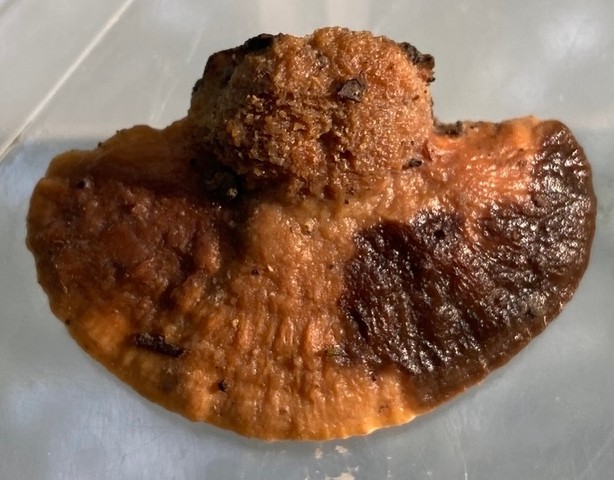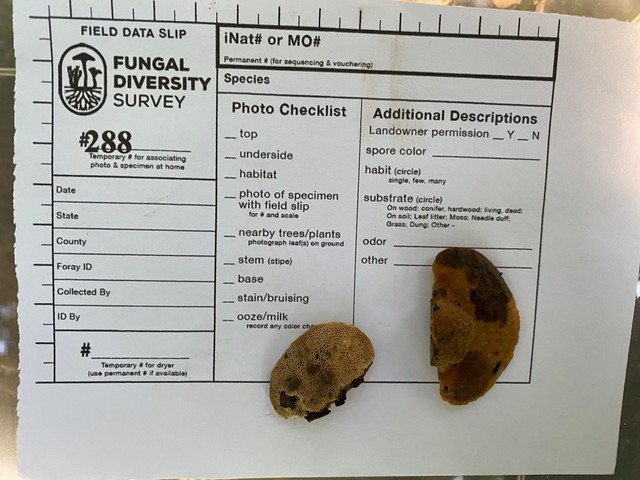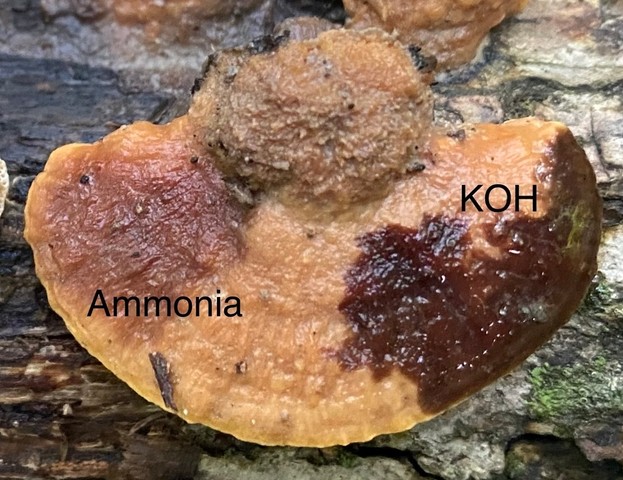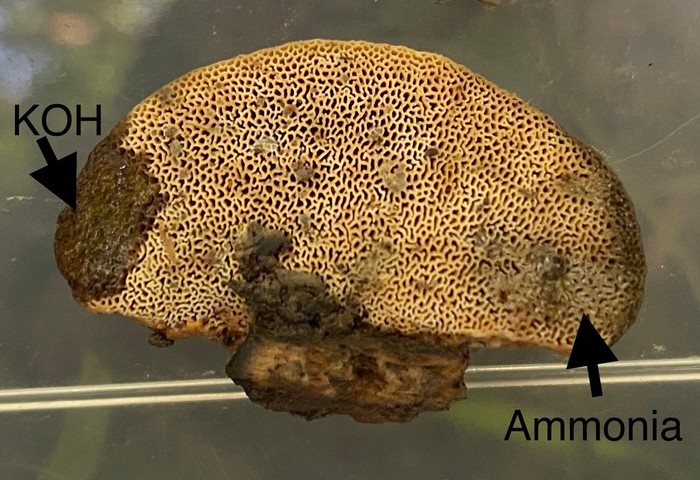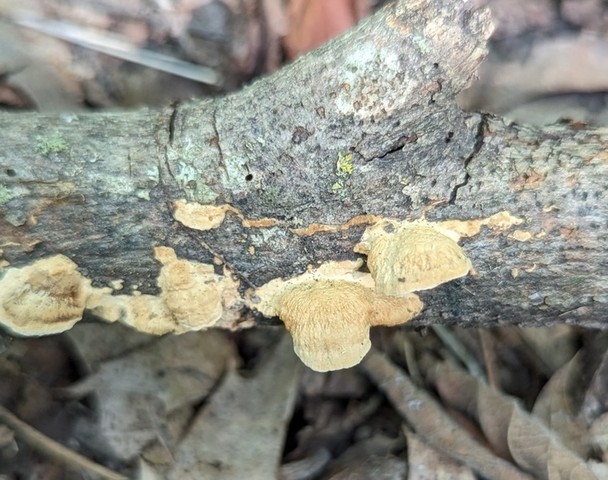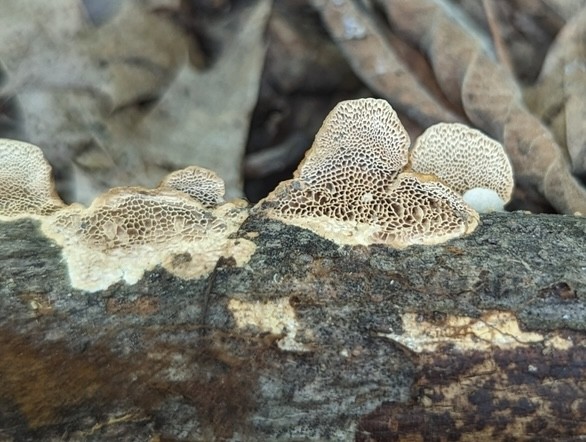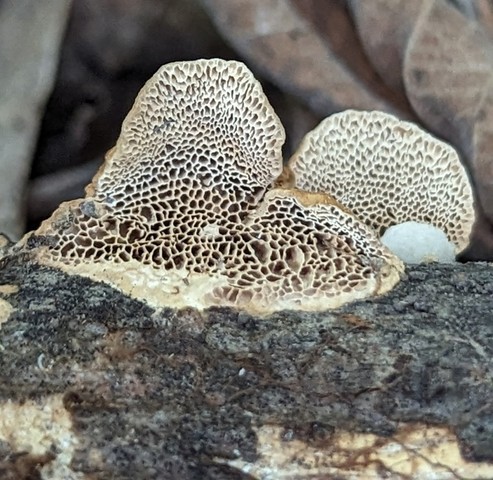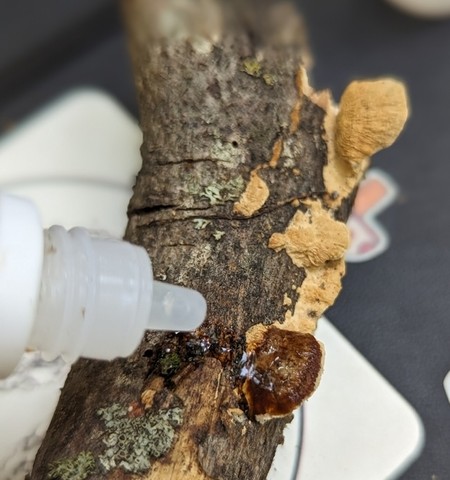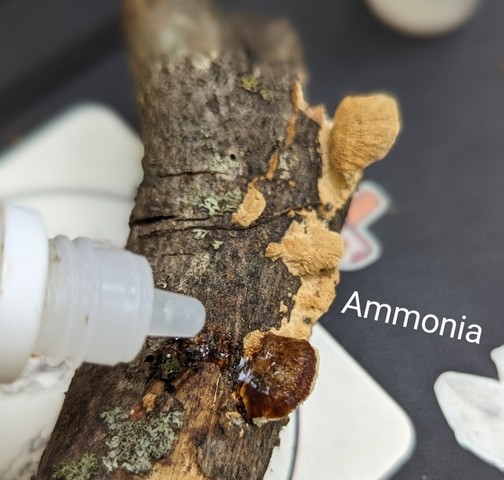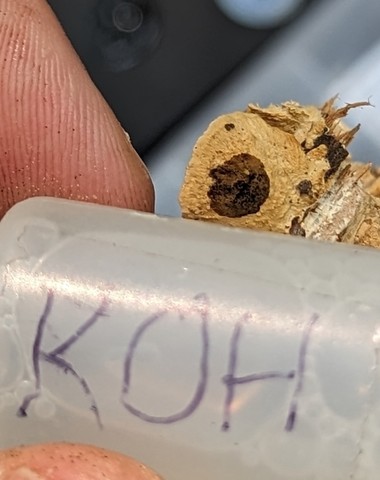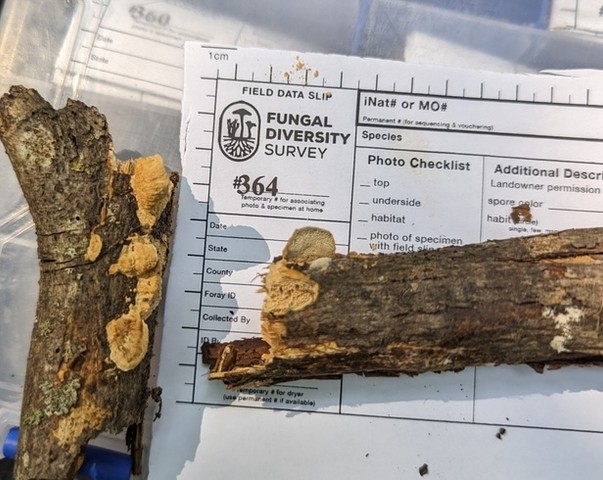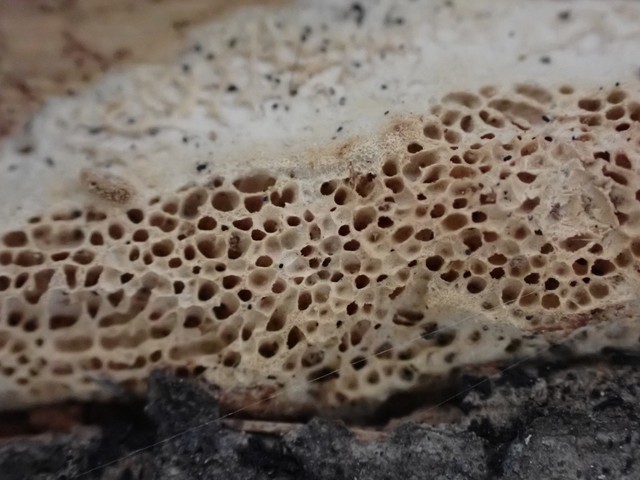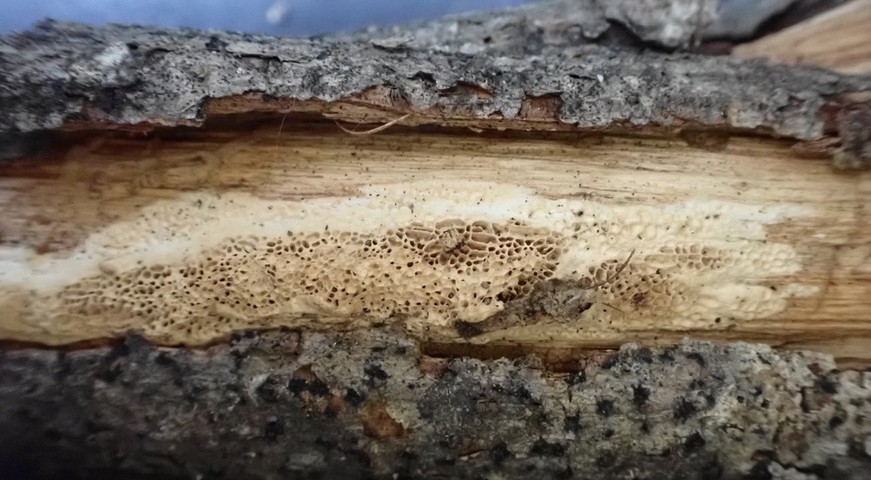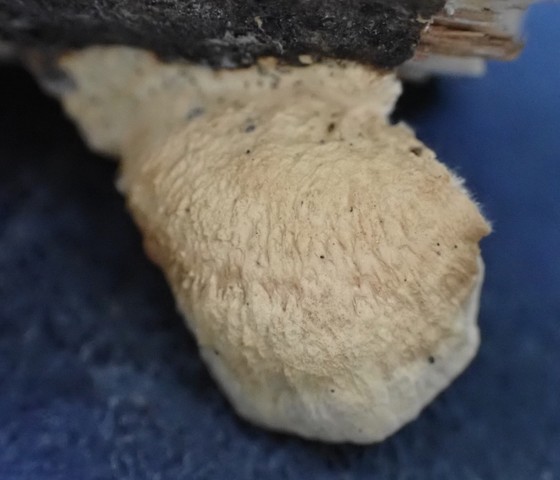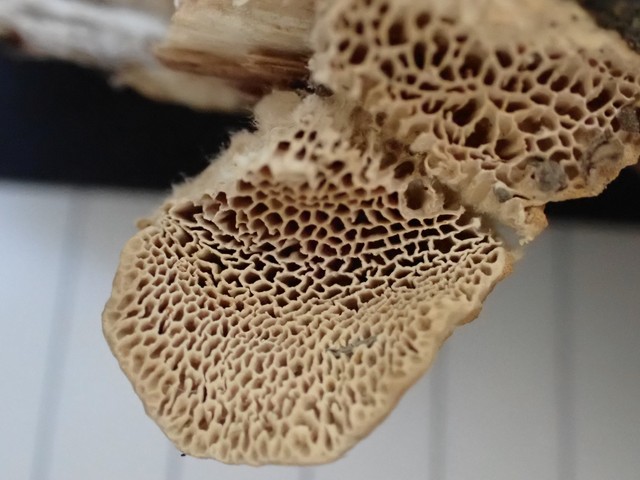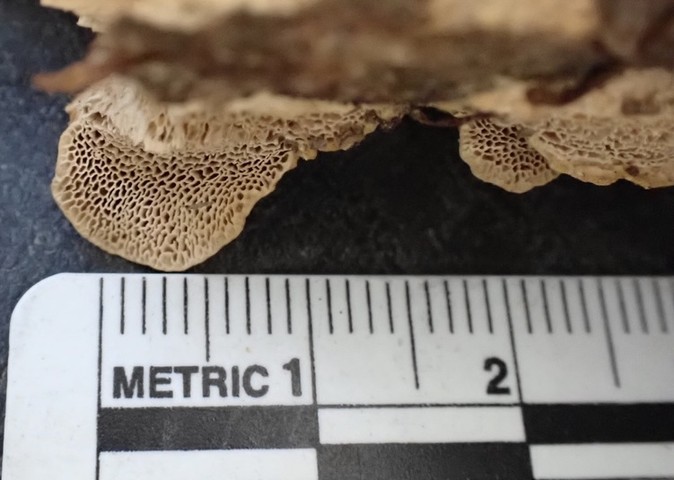Fomitopsis malicola
Life > Fungi > Basidiomycota > Agaricomycotina > Agaricomycetes > Polyporales > Fomitopsidaceae > Fomitopsis
Description
Fomitopsis malicola appears in spring and fall on dead wood of broadleaf trees; these collections were from shaded Oak–Hickory forests. It grows in shelves to gregarious clusters, reported on fallen branches including Chinqupin Oak (Quercus muehlenbergii) and Shagbark Hickory (Carya ovata).
Fruiting bodies are sessile and shelf-like to partially crust-like, with caps ranging from dull red-brown to yellow-tan or dull orange. Cap surfaces are smooth to bumpy and may show concentric zonation, with a hairy or uneven zone near the point of attachment. Pores on the underside are round to irregular, sometimes honeycomb-like, and range from white to cream or pale yellow. The fertile surface is hydrophobic. KOH applied to the cap produces a wine red reaction that later turns black; on the hymenium it produces a gray color. Ammonia applied to the cap first turns it orange-red, then dull dark red with a lighter margin; on the hymenium it produces a gray reaction. The spore print is white to pale yellow.
Observations
August 9th, 2023 Indian Cave State Park
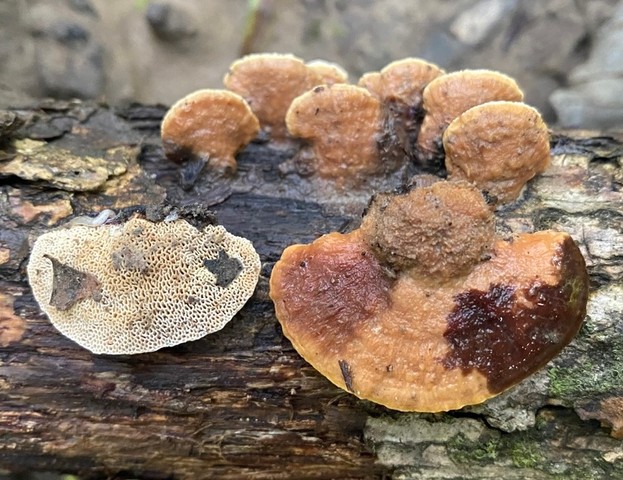
288
Growing gregariously to shelving from fallen Chinqupin oak branch along trail on an east facing slope and low, shady Oak/ hickory woodland.
- Hymenium: pores round to irregular. Color white to cream.
- Cap: dull red-brown to dull orange. Sessile attachment. Large cap attachment zone hirsute to bumpy; surface texture smooth to bumpy with concentric zonation.
- Chemical reactions not as bright as expected, so unsure of exact taxon, but reactions could be skewed by moisture on cap.
- KOH: pileipellis: deep red then black; hymenium: gray-brown.
- Ammonia: pileipellis: first orange-red turning dull dark red w/ light red margin; hymenium: gray
- Spore Print: white to pale yellow
GTCGTAACAAGGTTTCCGTAGGTGAACCTGCGGAAGGATCATTATTGAATTTTGAGAGGGGTTGTAGCTGGCGTTCTCGGACGCATTTTGTGCACGCCCTGATCATTATCCATCTCACACCTGTGCACACTCTGTAGGTCGGTTACTGGGGCTACTGTCTTTATTGGTGGTGCTCTGTGGCCTTCCTATGTTTTTATACAAACTACTCAGTTTAAAGAATGTCAATTGCGTGTAACGCATTTATATACAACTTTCAGCAACGGATCTCTTGGCTCTCGCATCGATGAAGAACGCAGCGAAATGCGATAAGTAATGTGAATTGCAGAATTCAGTGAATCATCGAATCTTTGAACGCACCTTGCGCTCCTTGGTATTCCGAGGAGCATGCCTGTTTGAGTGTCATGGAATTCTCAACTCTATTTGCTATTTGTGAATAGGGCTTGGACTTGGAGGTTTTGAATGCTGGATACTACTTTGTATTCAGCTCCTCTTAAATGCATTAGCTCGAGCCTGTTGTGGATCAGCTTCAGTGTGATAATTGTCTACGCTGTTCTGTGAAGCATTATTATATATGGGCCTTCGGCTTCTAATTGTCCTGTACTGGACAACATCTATGACCTTTGACCTCAAATCAGGTAGGGTTACCCGCTGAACTTView MycoMap DNA Results
September 6th, 2023 Indian Cave State Park
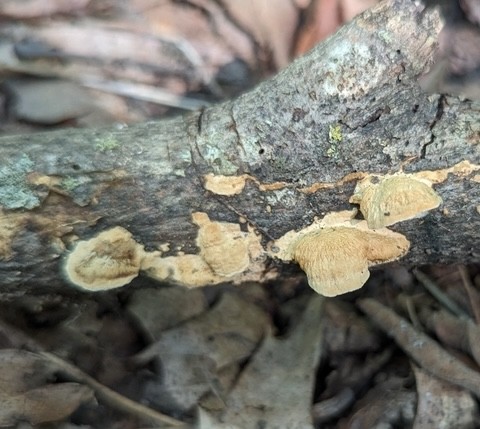
#364
- Growing clustered in shelves on fallen Shagbark Hickory branch in mixed oak/hickory woodland.
- Caps small (0.5-1.5cm) yellow-tan, shelving to resupinate.
- Hymenium large honeycomb-like/ irregular pores. Hydrophobic.
Additional Info
- KOH dark brown at first and later fading to lighter brown.
- Ammonia wine red on cap.
Created December 15, 2025 at 10:41 AM



